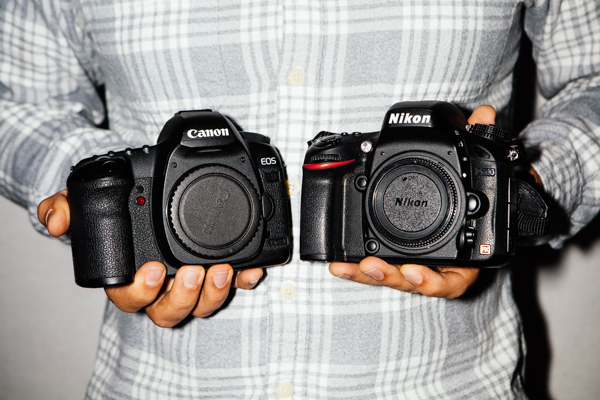Important Information On Canon Vs Nikon Cameras
The Nikon and Canon cameras are typically similar in quality when making comparisons on similar formats and price points. However, there are differences when it comes to advanced photographers in regards to lens compatibility and settings. For the majority of buyers trying to make a choice on a better brand, it becomes important to consider what type of camera you feel most comfortable operating and holding, and what specific camera matches up to your requirements in resolution, shutter lag, AA-battery powered vs. rechargeable, video recording along with other types of criteria for daily use.
Reliability
According to a study conducted by PC World, the Canon cameras are regarded as highly durable, with very few issues that occur. The Nikon’s are suggested as less durable along with an average rating in reliability compared to other types of digital-camera brands.
Flash
The older brands of the Canon cameras don’t feature flash performances that are consistent, with an exposure that will vary from one frame to the next. However, the latest Canon 5D Mark III offers flash exposure that is perfect. The flash-sync options are more complex to set when compared to the Nikons as well as the manual-flash mode. All the Nikons offer perfect flash-exposure along with a lot more flash-sync options which are far easier to set.
Compatibility
The Canon lenses and cameras produced since 1987 which were known as the EOS are now incompatible with the types produced before the year 1987. But they are all-compatible when it comes to other lens and cameras produced after 1987. The Canon APS-C bodies are able to use standard EF mount along with the EF-S mount lenses. The Canon cameras are able to use the Nikon lenses, as long as they use an adapter. Most of the Nikon SLR lenses and cameras are compatible with other each other, especially the types from the window of 10 to 20 years. The Nikon cameras are unable to use the Canon lenses.
Playback Data
The Canon cameras display information clearly on photographs, but they don’t display millimeter settings in association to the lens. Canon is unable to show color YGRB histogram when zoomed in on smaller areas in association to an image. Nikon on the other hand provides all data on photographs, but on a number of different screens. It also allows a user the ability to zoom into smaller areas and still view this section’s color YRGB histogram.
Auto ISO
While the Nikon and Canon cameras provide a way for the users to choose shutter speeds in order to increase ISO based on the lens-focal length, the Nikon only allows for the user to do this in fixed amounts.
Lens Diaphragms
The Canon cameras use 6 or 8 bladed diaphragms up till 2012. This created inferior sunstars along with more out-of-focus “highlight blobs.” The Nikons use 7 or 9 bladed-lens diaphragms that create less-disruptive shapes and superior sunstars.
Tone And Color
These 2 brands define tones and colors in a different way as well as the use of different Auto White Balance. What this means is that pictures from each camera will always appear slightly different when comparing them.
Lens Corrections
Most Nikon and Canon DSLRs provide electronic-lens corrections when it comes to lateral color distortion and fringes and dark corners. The Canons are unable to correct the distortion in-camera “as shot.” The Nikons are able to correct images in the process of a “shot.”
Market Sales And Shares
In the year 2011, canon raked in revenue of 3.557 trillion yen, and an operating income that equated to 378.071 billion. Nikon features revenue of 887.5 billion yen along with operating income equating to 54.1 billion.
